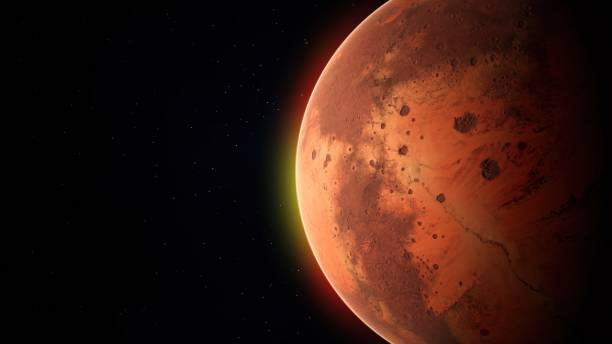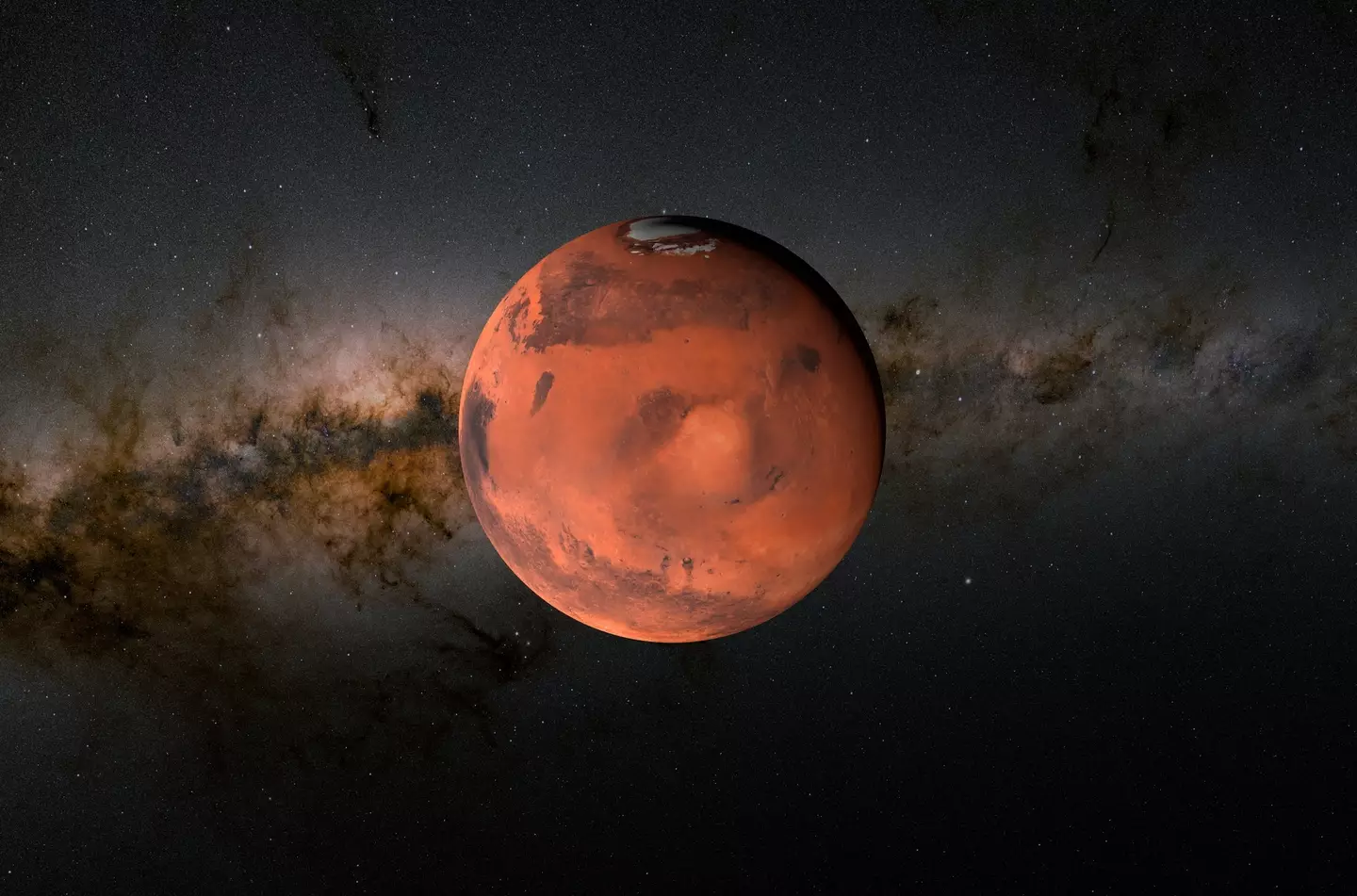Mars, often called the Red Planet, continues to intrigue scientists and enthusiasts alike with its enigmatic landscape and potential for harboring life. A recent photograph captured by NASA’s Mars Reconnaissance Orbiter (MRO) has added a fascinating new element to this exploration.
The image showcases frozen sand dunes resembling “kidney beans” in Mars’ northern hemisphere. These unusual formations provide valuable clues about the planet’s climatic history and the possibility of water and life on Mars.
Frozen Dunes and the Mystery of Mars’ Climate
The “kidney bean” dunes are essentially sand formations coated in carbon dioxide frost. The photo, taken in September 2022 and released in December 2024, captures these dunes during the Martian winter, when temperatures plunge and frost locks the sand grains in place.
Unlike the shifting dunes found in Earth’s deserts, these frosty Martian dunes remain motionless until the arrival of spring, when the frost sublimates back into the atmosphere.
On Earth, dunes are constantly shaped by wind, creating a dynamic and ever-changing landscape. The stillness of these Martian dunes, trapped under frost, provides a stark contrast and offers a unique opportunity for scientists to study the Red Planet’s surface under static conditions. By analyzing these frozen formations, researchers can better understand how Mars’ atmosphere and climate interact with its surface.
Read : Human Blood Could Build Future Mars Homes Similar to Ancient Roman Techniques
The presence of carbon dioxide frost instead of water ice highlights the stark differences between Mars and Earth. However, it also raises important questions about Mars’ potential to support water-based life in the past. The frozen dunes act as natural records of climatic changes, offering insights into the Martian environment over millennia.
Could Mars Have Supported Water and Life?
One of the primary goals of Martian exploration is to determine whether the planet ever had enough water to support life. Although the frost covering the dunes is made of carbon dioxide, its behavior and effects on the Martian surface can provide indirect evidence about past water activity.
Read : Mysterious ‘Hole’ on the Flank of an Ancient Volcano on Mars Could Shelter Humans: Research
Mars’ axial tilt, which wobbles significantly over millions of years, plays a crucial role in its climate. When the tilt increases, carbon dioxide ice sublimates into gas, thickening the planet’s atmosphere. This thicker atmosphere could potentially trap enough heat to support liquid water on the surface for extended periods.

Scientists believe that during certain epochs in Mars’ history, this atmospheric thickening could have created conditions suitable for stable liquid water. If so, it’s plausible that microbial life might have evolved during these periods. The frost-covered dunes, with their static formations, act as a window into these ancient climatic cycles, helping researchers reconstruct the environmental conditions of the past.
Studying the carbon dioxide frost also helps scientists differentiate between geologic formations caused by physical processes and those that might have been influenced by biological activity. For example, understanding how frost interacts with Martian soil and rock formations can reveal whether similar structures elsewhere on the planet might indicate the presence of ancient water or even life.
Unveiling the Secrets of Mars’ Shifting Climate
Mars’ dramatic seasonal changes, driven by its axial tilt and elliptical orbit, are key to understanding the planet’s climate history. Unlike Earth, where axial tilt varies only slightly over time, Mars experiences significant wobbles that lead to extreme shifts in climate. These shifts influence the behavior of carbon dioxide frost and, potentially, the presence of liquid water.
The MRO’s photographs of the “kidney bean” dunes provide a detailed view of how frost accumulates and sublimates with the seasons. By monitoring these changes, scientists can refine their models of Martian climate dynamics and predict how the planet’s atmosphere has evolved.

This understanding is critical for identifying periods in Mars’ history when liquid water might have been stable. If such periods existed, they would significantly increase the likelihood that life once thrived on the planet. Moreover, the possibility that microbial life might still exist in sheltered subsurface environments cannot be ruled out.
Future missions to Mars, equipped with advanced instruments, will build on these findings to explore potential habitats for life. By studying formations like the “kidney bean” dunes and other frost-affected landscapes, scientists hope to uncover more clues about Mars’ mysterious past and its potential to support life.
The discovery of frozen “kidney beans” on Mars is more than a fascinating visual detail; it is a gateway to understanding the planet’s climate, history, and potential for life. These frosty dunes, captured in stunning detail by NASA’s Mars Reconnaissance Orbiter, provide critical data about the interplay between the Martian atmosphere and surface.
By unraveling the secrets of these frozen formations, scientists can better comprehend how Mars has changed over millions of years and assess its potential to have supported life. As exploration of the Red Planet continues, the enigmatic “kidney bean” dunes remind us of the vast and untapped mysteries waiting to be discovered in our solar system.
let’s enjoy few years on earth with peace and happiness….✍🏼🙏

